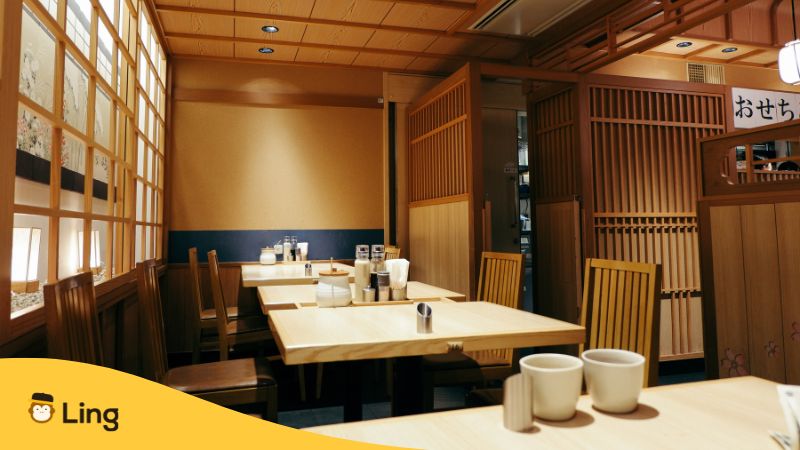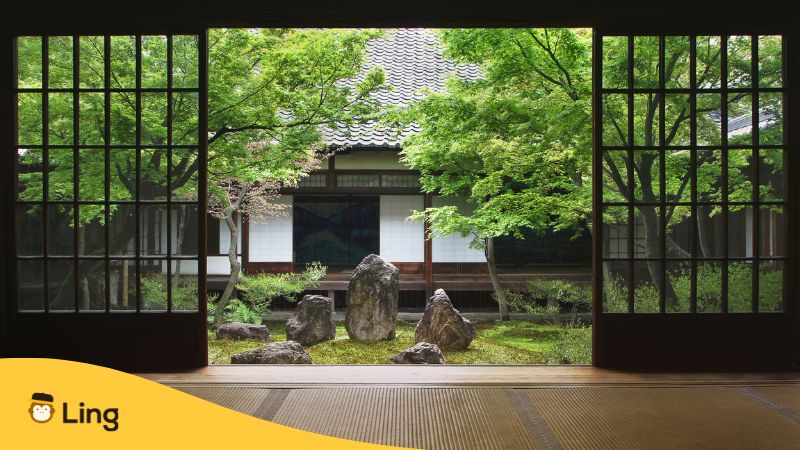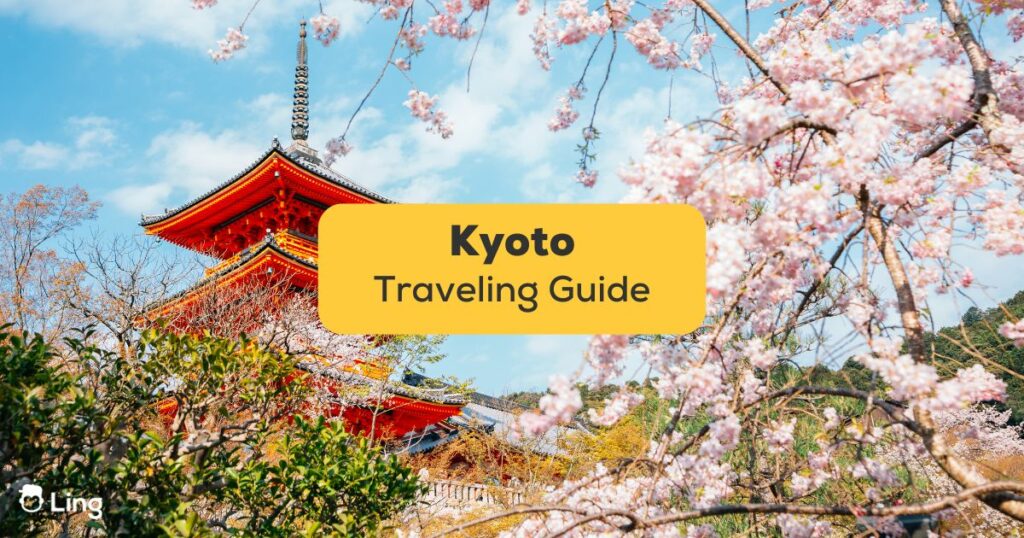If you will be traveling in Kyoto this year but don’t know how to plan your Kyoto itinerary, this Kyoto travel guide is specifically for you!
Kyoto, the most beautiful Japanese city, is a place that the word beautiful is not even enough to describe! I can confidently say this based on my travel experiences. So, for those who want to travel to Kyoto, I answer all your questions in this blog post from how to get to Kyoto to must-visit places in Kyoto. So, let’s get started!
Table of Contents:
- How To Get To Kyoto?
- Where And What To Eat In Kyoto?
- Where To Stay In Kyoto?
- Entertainment In Kyoto
- Shopping In Kyoto
- Must-Visit Places in Kyoto
- How Many Days In Kyoto Is Enough?
- Things To Do In Kyoto
- Best Time To Visit Kyoto
- Travel Tips For Foreign Tourists
- Final Words
How To Get To Kyoto?
Let’s start our guide by learning how to get to Kyoto! First of all, there is no airport in Kyoto. However, there are very comprehensive bus lines in the city. You can go anywhere within Kyoto by purchasing a daily pass, but we will get to that later.
By Air
Since there is no airport in Kyoto, you will land at the Kansai Airport in Osaka. From there, you can reach Kyoto in 70 minutes by the JR Haruka Express Train, which is the fastest alternative. Another alternative is taking the JR Rapid Train, but you will have to transfer from Osaka Station, and you will get to Kyoto in 100 minutes.
By Train
It takes about 140-160 minutes to travel from Tokyo to Kyoto by train, and a one-way ticket costs around 13,000-15,000 Yen. Some local trains can take up to nine hours to arrive and cost around 2,370 Yen.
But if you want to take a train from Osaka instead of Tokyo, you can use the Shinkansen for 1,420 Yen and get to Kyoto in 15 minutes.
I know it sounds expensive, but that’s why you should get a Japan Rail Pass (JR Pass). This way, you won’t even pay an extra cent for transportation. You can also get a Kansai Pass, which is valid only for this region.
I know you may be confused because I mentioned many train alternatives here, but believe me, you will see how easy it is when you are in Japan.
By Bus
There are also buses from Tokyo to Kyoto, but they take around 9-10 hours. Bus tickets cost between 4,000 and 5,000 Yen. If you want to see available buses from other Japanese cities as well, check out companies that offer highway bus services for more information!
Traveling In Kyoto
The most convenient ways to travel around Kyoto are buses and the metro. But keep in mind that the metro does not go to most of the places you might want to go. So pay 490 Yen and get a daily pass to ride all buses comfortably. Many tourist offices located at the train station can help you with this.

Where And What To Eat In Kyoto?
In Kyoto, there are three very important places to eat: Gion, the Nishiki Market, and the Pontocho area.
In Gion, you can eat traditional Japanese food like ramen and steamed meat dumplings at traditional restaurants. These dishes are very popular and will cost you around 1,500 Yen per person.
In Nishiki Market, a region with many passages, you can find hundreds of sushi restaurants, such as the Kaiten Zushi restaurants, which are very common in this area. Eating sushi around Nishiki Market will cost you around 2,000 Yen per person.
Pontocho is a region between Gion and Nishiki Market, located right next to the river. It has charming, narrow streets and wonderfully designed Japanese restaurants. Here, there are usually fixed menus. For example, you can eat a classic fixed menu consisting of soup, main course, and dessert for around 2,500-3,000 Yen.
Last but not least, there are also restaurants offering traditional Japanese tea ceremonies, especially in the Gion and Pontocho areas. Though prices can vary, it is usually between 2,000 and 4,000 Yen.
Just know what you want to eat and don’t worry too much about where you eat, at least that’s what I would suggest. Fortunately, almost all restaurants have menus with prices in front of their doors so that you can expect how much it will cost.
Where To Stay In Kyoto?

Although it may be more expensive, I recommend you stay somewhere close to the Gion area. But if you ask what the average price for accommodation is, hostels are around 3,000 Yen per person, while hotels are around 6,000 Yen for two people. These are the most affordable prices you can possibly find. However, if you visit Kyoto during the peak season of Sakura, these prices will be two times more expensive!
If you have no issues with your budget, you should definitely stay in a Ryokan (traditional Japanese inn)! Kyoto is the ideal city to stay in a Ryokan. Though some of them may be located a little out of town, no worries—there are bus lines everywhere in the city. Plus, I’m sure it would be an experience you will never forget in your entire life.
Entertainment In Kyoto
Before visiting Kyoto, remember that it is not really an entertainment type of city. In fact, many people say, “Go to Osaka if you want to have fun because Kyoto is a city of peace.” But still, we can list a few things.
There are no huge aquariums, zoos, or amusement parks in Kyoto, but there are Japanese festivals. If you ask me, being able to share those events with the locals and discovering common values and feelings is more enjoyable than other things.
Here are the most famous festivals that take place in Kyoto:
- Setsubun (February 3-4)
- Hanatoro (March 14-23)
- Sakura Season (April 1-15)
- Aoi Matsuri (May 15)
- Gion Matsuri (1-31 July) – one of the biggest festivals in Japan.
- Daimonji Gozan Okuribi (16 August)
- Jidai Matsuri (October 22)
Speaking of entertainment, Kyoto is famous for its Geisha shows, but they’re very expensive. The average price to watch a Geisha show is 10,000 Yen. But what do Geishas do? They mainly serve you tea and perform musical concerts specially for you using traditional Japanese instruments.
Shopping In Kyoto
If you are interested in Japanese handicrafts, you will be fascinated by Kyoto!
There is a very long street named “Shijo-Dori,” which extends to the Gion region. You can shop in thousands of stores throughout the street and visit shopping stores like Takashimaya and Marui.
You can walk from Gion to the Kiyomizudera regiıon, which has beautiful shops and stunning streets. So, if you want to go shopping, especially if you intend to buy local and handcrafted souvenirs, all you have to do is walk around these two regions and make the shopkeepers happy!
So what to buy? The fans you will see in the hands of many women are very popular. Additionally, you can buy handcrafted ceramics, magnets, tea sets, home accessories, paper embroideries, silk handicrafts, and samurai knives.
But shopping is generally expensive. Even a small magnet costs 400-500 Yen, while a package of 10 sushi pieces also costs 500 Yen. The choice is yours.
@traveller___bucketlist Japan is just another world 🇯🇵⛩️🏯 #kyoto #japan #travel #visitkyoto #kyotojapan
♬ 可愛くてごめん (feat. かぴ) – HoneyWorks
Must-Visit Places in Kyoto
There are plenty of places to visit in Central and downtown Kyoto, so you should plan your trip accordingly. Let’s say you have three days in Kyoto. I have prepared a three-day itinerary for you. So, you can use Google Maps to see and mark the locations of these places below. If you want to stay longer in Kyoto, you can divide this list into more days.
DAY 1
- Kinkaku-ji (Golden Pavilion)
- Ryoan-ji
- Ninna-ji
- Daikaku-ji
- Tenryu-ji
- Arashiyama Bamboo Forest
- Okochi Sanso Garden
- Arashiyama Monkey Park
- Nishiki Market
DAY 2
- Nijo Castle
- Kyoto Imperial Palace
- Ginkakuji
- Philosopher’s Way
- Nanzen-ji
- Yasaka Shrine
- Gion
- Pontocho County
DAY 3
- Kodai-ji
- Entoquinteien
- Kiyomizu-dera
- Tofuku-ji
- Fushimi Inari Taisha
How Many Days In Kyoto Is Enough?
How many days would be enough to visit Kyoto? I think three days is enough, but I would say try to stay as long as you can. There are beauties hidden in every corner of Kyoto that will amaze you. Even if you do nothing, you can get lost in the streets day and night.
Things To Do In Kyoto
- See Fushimi-inari, Kiyomizudera, Yasaka Shrine, Nanzenji,Ginkaku-ji, Kinkaku-ji, Tenryu-ji temples
- Walk on the philosopher’s path
- Get lost in the streets of the Gion district
- Wander through the bamboo forest in Tenryu-ji
- Eati ramen
- Wander around the area between Gion-Kiyomizu-dera
- Thoroughly research Zen philosophy in Zen gardens
- Drink coffee in restaurants with magnificent gardens in the Gion region
- Stay at a Ryokan
- Have a picnic under the Sakura trees
- Have dinner at Nishiki Market
- Attend the Gion festival held in July (or one of the other festivals)
- Shop on Shijo-dori street
I can add a lot more, but I think this will be enough to summarize the situation. Trust me, Kyoto will take your breath away because, among the cities I have visited, it is one of the top three!
Best Time To Visit Kyoto
The best time to visit Kyoto is from the end of March to the beginning of May (Sakura season) or from mid-October to mid-November. But if you visit in summer, you won’t regret it at all. Because as I mentioned before, the Gion festival which is one of the most important festivals, takes place in July in Kyoto.
Even if the weather is rainy during your stay, it is also enjoyable to visit the temples and streets with an umbrella in your hand.
Travel Tips For Foreign Tourists
Here are some travel tips for foreign travelers visiting Kyoto:
- If you are going in summer, be sure to always have an umbrella with you.
- Temples usually close at 5:00 PM.
- Taxis are very expensive.
- Be sure to get the bus map of the city from the tourist office. It will be very useful.
- If you are coming during busy periods, make hotel reservations well in advance.
- Visiting temples cost 400-500 Yen.
- Usually, there are no buses or metro at night.
Also, make sure to learn Japanese, at least the daily conversational phrases, to get by in Kyoto because speaking English is not very common for Japanese people. I recommend using the Ling app to learn Japanese before your trip!
Final Words
Kyoto is truly a gem worth exploring. It’s a city that effortlessly blends tradition with modernity, offering something special for every visitor. Whether you’re strolling through the historic streets of Gion, savoring local delicacies at Nishiki Market, or marveling at the majestic temples and gardens, there’s a sense of wonder waiting around every corner. Remember to grab a bus and train map from the tourist office to find your way around the city easily. By the way, if you are thinking about visiting Hokkaido as well, you may be interested in learning things to do in Hokkaido!
Until next time!


































































